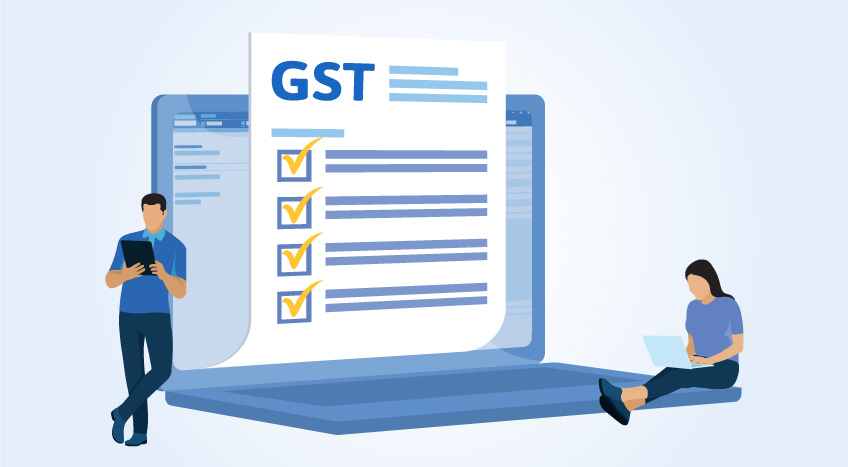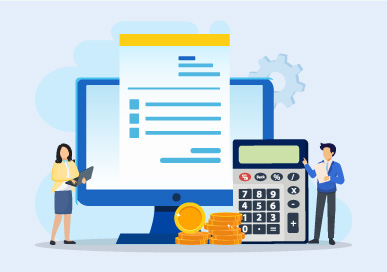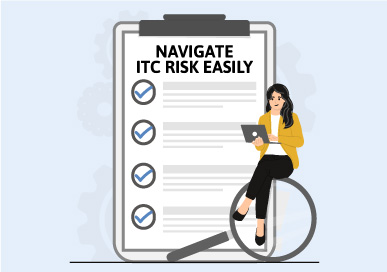- What is accounting?
- Key objectives of accounting
- Accounting process and steps
- Key accounting reports
- How accounting software helps businesses?
What is accounting?
Accounting is the process of systematically recording, analyzing, and reporting financial transactions of a business. It ensures every expense and income is properly tracked, making it easier to pull out data when needed for taxes, audits, or strategic planning.
Accounting is vital not just for legal compliance and tax filing but also for understanding your business’s health. Broadly, it has two key types:
- Financial accounting: Focuses on presenting business transactions through financial statements (like balance sheets and income statements) shared with external stakeholders.
- Management accounting: Helps internal teams and leadership make data-driven decisions, often including budgeting, forecasts, and internal reports.
Key objectives of accounting
The three key objectives of accounting are as follows.
- Record keeping
The fundamentals of accounting include record keeping which is the primary function of accounting. A business must use standard forms of storing and retaining information so it can be retrieved when the need for it arises. Thorough and accurate storage of records is essential for all transaction-related purposes. A software package such as TallyPrime can be utilized to store every transaction that takes place.
- Reporting
Financial reporting is a key accounting objective after record keeping. Accounting enables businesses to record and report their financial status at the end of a particular period. It involves putting together transaction details and reports that are necessary to make sense of a certain aspect of a business during a specific time period. Financial statements are results of aggregating financial information of a business and these are useful tools for reporting the financial parts of a business.
- Analysis
The reports which are based on the business records are analysed in accounting. When business health needs to be determined then the business reports are analysed. Analysis in accounting enables accountants to find out ways to improve business efficiency, upgrade processes, and to see where unnecessary expenses are being made. Analysis of financial reporting allows your business to run without problems as it ensures no discrepancies are found.
Accounting process and steps
The accounting process is one of the fundamentals of accounting. Also known as an accounting cycle, it follows a transaction from the moment it was recorded to when a report is made using various transactions that occurred in a particular period of time. Businesses can use single-entry accounting or double-entry accounting. Firms use accounting software packages such as TallyPrime to automate the accounting process. The benefits include saving time, effort, and money for storage, analysis, and retrieval purposes. Companies can fully automate their accounting or they can leave some aspects to be manually handled.
Steps of the accounting process
There are 8 steps in the accounting process. This is a framework and it can vary from company to company as each company has an individual model that it works with.
- Step 1: Transaction identification
You need to identify your business transactions first. Every unique transaction needs to be recorded so that it is reflected correctly. All expenses such as costs to acquire, repair, and upgrade need to be accounted for. Additionally, every sale record must be stored so it all sales transactions are in one place.
- Step 2: Journal creation
This step involves recording each transaction in a journal. You can choose between two types of accounting; cash accounting and accrual accounting. The difference is when the transactions are recorded and stored. Cash accounting is recorded the moment the cash is paid or received. Accrual accounting is when transactions are recorded as they occur.
- Step 3: General ledger posting
After the entry in the journal, the transaction details need to be reflected in the general ledger. The general ledger allows the categorization of transactions because they are saved according to different accounts. That is, transactions of the same account are recorded in one place and so on. This allows easy monitoring according to particular accounts.
- Step 4: Trial balance
In this step, the trial balance is calculated. Ideally, the debits must be equal to credits for every account. The trial balance throws light on the balances which have not been adjusted yet in every account. When an unadjusted trial balance is found, it is analysed in the next step of the accounting cycle
- Step 5: Worksheet analysis
Adjustment of the various transaction entries is done in this step of the accounting process. First, you need to create a worksheet and make sure that the credits and debits are equal to each other. In the case of accrual accounting, there is an additional step here which is to adjust the entries for revenue and expense matching purposes.
- Step 6: Journal entries adjustment
This is the stage in the accounting cycle where adjustments need to be made. Once the adjustments have been done, the trial balance is prepared again to ensure that the debits are equal to the credits. Only then can you move on to the next step.
- Step 7: Financial statements
This step involves the financial statements that are generated after all the entries have been adjusted in the journal. In the majority of the cases, the major financial statements will include the cash flow statement, income statement, and balance sheet. These uncover the truth behind how the business is doing financially and how much profits it is earning.
- Step 8: Closing
The last step of the accounting cycle is when the books are closed. This holds for the temporary accounts as they are shifted to permanent accounts. For example, the profit and loss statement is transferred to the retained earnings accounts and so on. The closing occurs at the end of the reporting period. After this, the cycle starts again.
Key accounting reports
The critical accounting reports are as follows.
- Balance sheet
The balance sheet contains information about the total liabilities, assets, and stockholder equity. It gives information about the company’s resources and how these sources are being financed. A balance sheet can help you make better business decisions.
- Profit and loss statement
The profit and loss statement is also known as P&L and income statement. It shows the revenues and expenses of a business over a period of time. A business is going in the right direction when the profits exceed its losses.
- Statement of cash flows
This report summarizes the cash that is received or paid. It doesn’t reflect the non-cash transactions that take place such as purchases made on the basis of credit. It contains three parts; investing, operating, and financing. It gives information about cash generation.
How accounting software helps businesses
An accounting software tool can take the complexity out of accounting. Whether the business is small, growing, or enterprise-level, every business needs an accounting software package. TallyPrime is the best example of accounting software that handles everything. All you need to do is record the bills and invoices. TallyPrime will automate the rest. It minimizes human errors, automates management of books of accounts, generates informative customized reports and financial statements, and makes tax returns easy. Additionally, it improves inventory management, ensures tax compliance, streamlines business processes, aids in business forecasting, and accurately generates financial statements. This ensures you know how your business is doing at every step of the way.
Some of the key features of TallyPrime:
- Record and bookkeeping
- Invoicing and billing
- Pre-defined chart of accounts
- Accounts receivable and payable management
- Wide range of accounting and financial reports
- Multi-currency support
- Sales and Purchase Management
- Online business reports
- Inventory Management
- Taxation support
With TallyPrime, you only need to input bills and invoices; the software handles calculations, compliance, and reporting.
Key Features of TallyPrime
- Record keeping & bookkeeping
- Invoicing & billing automation
- Pre-defined chart of accounts
- Accounts receivable & payable management
- Extensive financial and accounting reports
- Multi-currency support
- Sales & purchase management
- Online business reports
- Integrated inventory management
- Built-in GST & taxation features
Conclusion
Accounting is more than compliance — it’s the backbone of sustainable growth. By leveraging modern tools like TallyPrime, businesses can move from manual record-keeping to strategic financial management, boosting efficiency, accuracy, and competitiveness.
FAQs
Why is accounting important for small and medium businesses?
Accounting helps businesses track income and expenses, stay compliant with tax laws, and make data-driven decisions for growth. It provides financial clarity that supports planning, investment, and long-term sustainability.
What are the key steps in the accounting process?
The accounting process includes:
- Identifying transactions
- Recording in journals
- Posting to the general ledger
- Preparing a trial balance
- Adjusting entries
- Preparing financial statements
- Closing temporary accounts
This cycle ensures all financial activities are accurately captured and reported.
What are the main financial reports businesses should generate?
Key reports include:
- Balance sheet (assets, liabilities, equity)
- Profit and loss statement (P&L) (income vs. expenses)
- Cash flow statement (money in/out during a period)
These reports provide a complete view of financial health.
How does accounting software like TallyPrime help?
TallyPrime automates data entry, generates financial reports, ensures GST/tax compliance, and helps manage inventory and cash flow. This reduces manual errors and saves time, allowing business owners to focus on strategy and growth.
Is TallyPrime suitable for businesses without dedicated accounting teams?
Yes. TallyPrime is designed to be user-friendly, making it easy for business owners or small teams to manage accounting tasks without needing advanced expertise.
What’s the difference between financial accounting and management accounting?
- Financial accounting: Focuses on preparing financial statements for external stakeholders.
- Management accounting: Provides internal reports to help managers make business decisions, plan budgets, and improve operations.

















